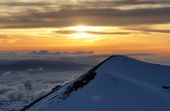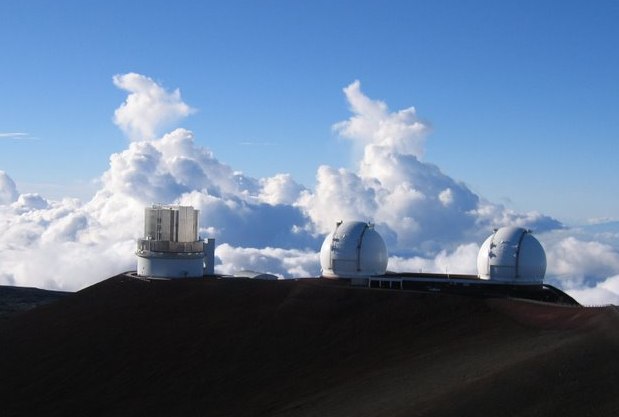Yet, today Mauna Kea's public lands are being exploited by foreign nations, corporations, and the University of Hawaii, who are all seeking to profit from telescope construction on the summit at the expense of its unique natural habitat, pure drinking water, and sacred cultural resources. Dozens of telescope and support structures already cover the sacred summit--built without the consent of Native Hawaiians and local communities. Now, two more telescopes (and accompanying roads, parking lots, office buildings, and gift shops) are proposed for the sacred summit. One of them -- the Thirty Meter Telescope -- is slated for construction on the summit's last pristine peak. It is larger than all the current telescopes on the summit combined.
University of Hawaii's Strategy
Why abide by the law, when you can get it changed? Two courts of law and two state audit reports have already found that the University's telescope industry on Mauna Kea has violated the state and federal laws that regulate activities on the sacred summit. To move forward with construction of this new giant Thirty Meter Telescope, the University is lobbying to change these laws.
That is why they have introduced four bills at the state legislature, handing over regulatory authority for Mauna Kea to the University. At the same time, the University is pressuring the Land Board -- the state entity that is supposed to be protecting Mauna Kea -- to adopt a management plan that identifies public access, not telescope construction, as the primary threat to the natural and cultural resources of the summit.
Limit Access to Mauna Kea
The University says it will use its new authority to implement their plan, which proposes to "manage public access" by closing the publicly owned road that leads to the summit, charging people for access to the summit, and dictate when, where and how Hawaiians may worship on the summit. The plan actually says public access and cultural activities will be "restricted to daylight hours" and "must not interfere with astronomy activity."
No Limit on Telescope Construction
Although telescope construction has destroyed and desecrated the sacred summit of Mauna Kea for 40 years, the University's plan offers no limitations on future telescope construction. The University offers no plan to remove obsolete telescopes before constructing new ones, no plan to determine the carrying capacity of summit -- a basic requirement for assessing whether another telescope should even be considered on Mauna Kea -- and no plan for returning the land to previous pristine condition when the lease ends in 20 years. In fact, the University's plan actually provides for increased commercial activity on the summit -- including concession stands.
Pocket the Public's Money
The University also wants a special fund for all of the profit it makes from charging people to visit the mountain and subleasing these public lands to the foreign countries and corporations that own the telescopes on Mauna Kea. It is estimated that the University makes over $60 million from Mauna Kea every year. That money belongs to the people of Hawaii -- the taxpayers & Native Hawaiians -- for whom Mauna Kea is held in public trust. Establishing this special fund means the people of Hawaii would lose out entirely on the revenues collected from the use of their public trust lands.
According to the author Kealoha Pisciotta, President Mauna Kea Anaina Hou
The UH plan says -- and I quote --
'one of the best methods of minimizing damage to resources is through education.' Actually, I think we can all agree that one of the best ways to minimize damage to resources is to not let the developer build in a conservation district.A Better Future is Possible
We know a better future is possible for Mauna Kea. For over 10 years, community members have advocated for a true conservation plan, independent oversight, fair representation and fair compensation.





Reader Comments
to our Newsletter